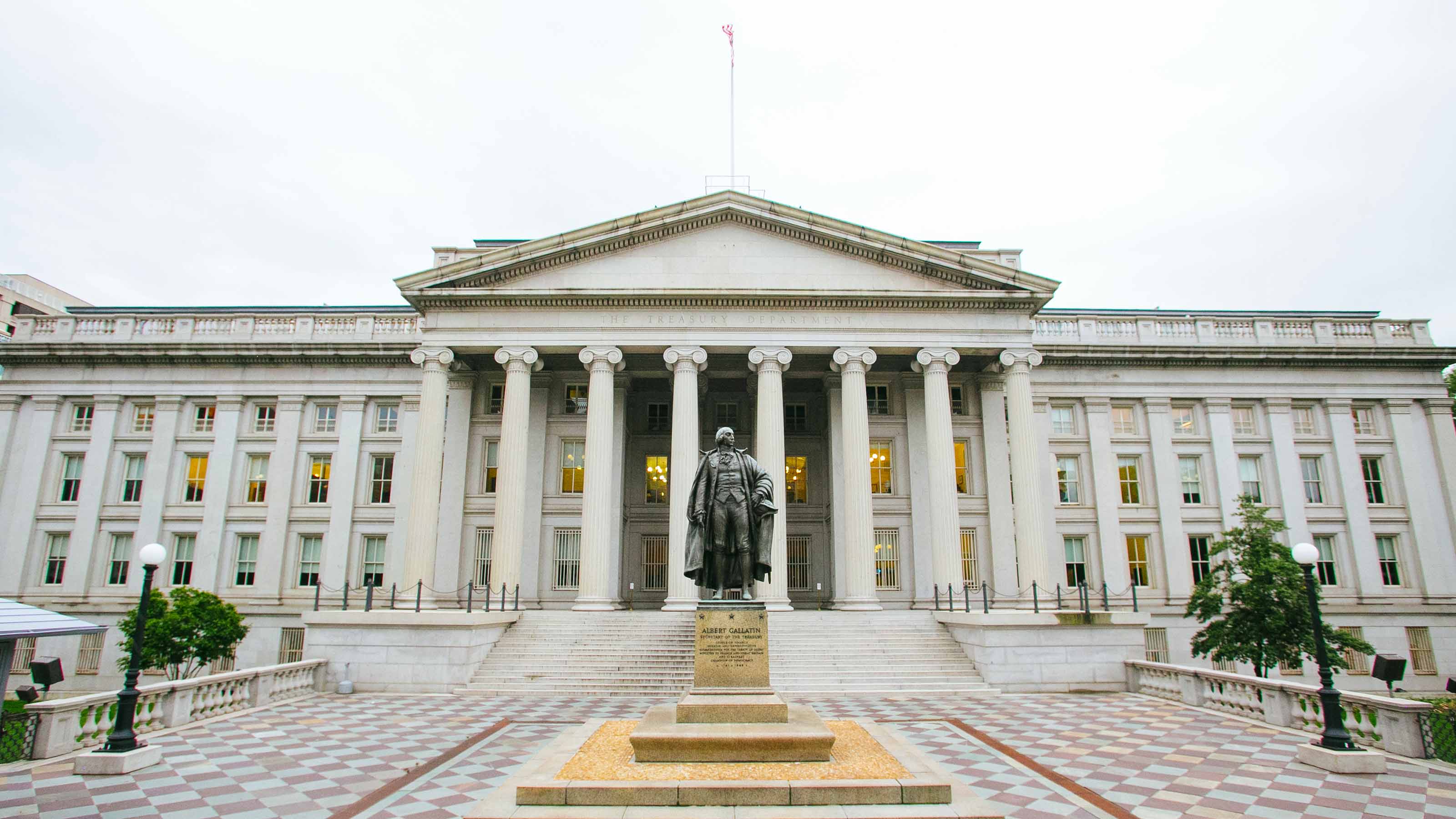Ultra-Short: Still Ultra-Safe?
The poor performance of two ultra-short bond funds from esteemed firms calls into question whether these investments are safe alternatives to money-market funds.

One of the year's biggest financial embarrassments is playing out in one of the most unlikely corners of the mutual fund business. Two bond funds designed to beat money-market funds with little extra risk and sponsored by two of the industry's titans are sitting on stiff year-to-date losses, leaving shareholders shocked.
The two funds are Fidelity Ultra-Short Bond Fund (symbol FUSFX) and SSgA Yield Plus (SSYPX), a product of State Street Global Advisors. Both have suffered sharp declines in net asset value since July (when the subprime-mortgage mess began taking its toll on the bond market), negating all their income for the year and then some. Through November 19, the Fidelity fund lost 4.3% (on a total return basis), and the smaller SSgA Yield Plus sank 8.1%.
Ultra-short bond funds are designed to beat the returns of money-market mutual funds while minimizing risk to principal. Fidelity, for instance, keeps the average maturity of its Ultra-Short Bond fund to two years or less.
From just $107.88 $24.99 for Kiplinger Personal Finance
Become a smarter, better informed investor. Subscribe from just $107.88 $24.99, plus get up to 4 Special Issues

Sign up for Kiplinger’s Free Newsletters
Profit and prosper with the best of expert advice on investing, taxes, retirement, personal finance and more - straight to your e-mail.
Profit and prosper with the best of expert advice - straight to your e-mail.
Other ultra-short funds have handled the credit crunch -- at least until now. But the damage to the Fidelity and SSga funds, both supervised by senior people at esteemed fund management firms, calls into question whether any ultra-short bond fund is a safe alternative to a money-market fund. Until this stumble, I would have confidently had said, "Yes." No longer is that the case.
For many years, the Fidelity and State Street funds stayed within a few pennies of $10 a share, just what you should expect after reading the prospectuses. But after repeated markdowns of the value of their holdings, the Fidelity now trades at $9.15 per share, and the State Street fund fetches $8.67.
Neither has cut its dividend. The current yields are nice -- 5.7% at Fidelity and 5.9% at SSgA. But the loss of value more than negates the income. SSgA's five-year annualized total return is down to 0.3% and Fidelity's is only 1.4%.
Could you tell this was coming? It's doubtful. Bob Auwaerter, head of the bond investment team for Vanguard funds, says it would be hard to foretell a disaster in a fund that rapidly turns over short-term IOUs, no matter how diligently you or I could study the fund's assets.
Auwaerter says a professional analyst might flag some dangerous holdings that he personally would refuse to buy from Wall Street's salespeople, such as certain highly leveraged packages of low-quality mortgages and bank loans. But that's easier to say now than six months ago, when those investments were still performing well.
I asked Auwaerter, whose firm doesn't have a fund that's directly comparable to the Fidelity or the SSgA ultra-short funds, if he was surprised that more such funds haven't crashed. He wouldn't discuss any fund by name, but he would not rule it out.
He says a lot of fund managers are used to taking chances to stretch for yield and forgot to question why a triple-A rated mortgage-backed security would be quoted at a yield nearly a full percentage point more than other triple-A debt. "The rating agencies sold their souls," Auwaerter says, meaning that all triple-A-rated securities aren't of equal soundness. Managers have to rely on "judgment and market experience," he adds.
Look under the hood. Let's see what's ticking anyway. Here's an interesting nugget from Fidelity Ultra-Short's annual report covering the 12 months that ended July 31, just when the fund began to hemorrhage. It's a pie chart of the assets. In January 2007, 35% of Fidelity Ultra-Short's investments were AAA-rated or backed by the U.S. government. In July 2007, those two safest layers were up to 42% of the fund.
The fund's duration -- which measures how the value of a bond or bond portfolio moves with changes in interest rates -- was a tiny 0.4 years as of July 31. That meant that movements in interest rates would have practically zero effect on the fund's net asset value.
So why has the fund lost close to 10% of its value since July? Co-manager Andrew Dudley, an experienced hand who has a good record on other Fidelity bond funds going back to the 1990s, pleads "sizable exposure to subprime mortgage securities" and the fund's slowness to get out of them.
Clearly, triple-A isn't what you think or Andy Dudley thinks it used to be. And maybe a simpler fund is better. The annual report needs 45 pages to list the investments in what was, as of July 31, a $1 billion fund (and is now down to $730 million). The holdings included credit-default swaps, total-return swaps, floating-rate mortgage securities, structured this and collateralized that. Some of these, such as credit-card receivables, are recognizable and relatively clear-cut. Most of them aren't.
SSgA Yield Plus has many fewer investments, but its explanation for failing its shareholders is similar. The fund reports it was "impacted" by problems with subprime mortgages and suffered when other investors sold the same kind of securities Yield Plus held, "resulting in severe illiquidity." Translation: The SSgA team of managers stayed to the bitter end and now finds that the value of these securities is far below what they paid for them.
Any chance for a recovery? Not for a while. Nothing in the financial news offers any reason to see fresh demand for beaten-down mortgage bonds. There are better bottom-fishing opportunities in stocks, real estate and corporate bonds.
So look for the Fidelity and SSgA ultra-short funds to keep sinking. Neither company was willing to let managers discuss where they might think the bottom is for the busted securities that have ruined their years.
Lower short-term interest rates would help, in theory. But ultra-short funds have such low durations that the Federal Reserve would have to cut its key Federal funds, now 4.5%, to 1% before the prices of ultra-short bonds showed any meaningful increases. And such dramatic Fed easing would only come as the response to a recession, which would almost certainly inflict additional pain on mortgage-related assets.
Some ultra-short funds appear to be much safer, but you pay a price by accepting considerably less yield. Despite the absence of the missing U-word in its name, TCW Short-Term Bond Fund (TGSMX) has an ultra-short average duration of just one year.
Almost all of TCW's holdings are mortgage debt, but almost all of the securities are backed by the government or by Fannie Mae or Freddie Mac, quasi-public agencies. If the U.S. housing market collapsed and the backing of Fannie or Freddie became problematic, the TCW fund would fall hard. But for now, its triple-A mortgage investments are honest triple-As for the most part.
The fund yields 4.3%, and that happens to be its year-to-date total return. In other words, it has behaved just as you would expect an ultra-short-term bond fund to behave. The fund has delivered a modest yield with virtually no movement in its share price.
Then there's the Fidelity Government Money Market Fund (SPAXX), which is also paying 4.3%. Some money-market funds have also gotten caught up in the subprime follies, but their sponsors, unwilling to let the funds "break the buck" (that is, lose money) have bailed them out. As long as Uncle Sam remains solvent, the Fidelity Government money fund truly is risk-free.
If you want total safety, you're better off going with a money fund than assuming that an ultra-short-term bond fund will skirt trouble. The ultra-short-term category is a good idea, but even good ideas stumble from time to time. This is one of those times.
Profit and prosper with the best of Kiplinger's advice on investing, taxes, retirement, personal finance and much more. Delivered daily. Enter your email in the box and click Sign Me Up.

Kosnett is the editor of Kiplinger Investing for Income and writes the "Cash in Hand" column for Kiplinger Personal Finance. He is an income-investing expert who covers bonds, real estate investment trusts, oil and gas income deals, dividend stocks and anything else that pays interest and dividends. He joined Kiplinger in 1981 after six years in newspapers, including the Baltimore Sun. He is a 1976 journalism graduate from the Medill School at Northwestern University and completed an executive program at the Carnegie-Mellon University business school in 1978.
-
 Is Home Insurance Tax Deductible?
Is Home Insurance Tax Deductible?With home insurance rates on the rise, you might be hoping to at least claim the cost as a tax deduction. Here's what you need to know ahead of tax season.
-
 The December Jobs Report Is Out. Here's What It Means for the Next Fed Meeting
The December Jobs Report Is Out. Here's What It Means for the Next Fed MeetingThe December jobs report signaled a sluggish labor market, but it's not weak enough for the Fed to cut rates later this month.
-
 Trump Signals Plan to Ban Institutional Investors From Buying Single-Family Homes
Trump Signals Plan to Ban Institutional Investors From Buying Single-Family HomesThe president says the move could improve housing affordability. Here’s what the data shows about investor ownership, recent buying trends and what it could mean for homebuyers.
-
 The Most Tax-Friendly States for Investing in 2025 (Hint: There Are Two)
The Most Tax-Friendly States for Investing in 2025 (Hint: There Are Two)State Taxes Living in one of these places could lower your 2025 investment taxes — especially if you invest in real estate.
-
 The Final Countdown for Retirees with Investment Income
The Final Countdown for Retirees with Investment IncomeRetirement Tax Don’t assume Social Security withholding is enough. Some retirement income may require a quarterly estimated tax payment by the September 15 deadline.
-
 Why Investors Needn't Worry About U.S. Credit Downgrade
Why Investors Needn't Worry About U.S. Credit DowngradeFitch Ratings The United States saw its credit rating downgraded for just the second time in history, but experts aren't worried about the long-term damage to stocks.
-
 Income-Investing Picks for a Recession
Income-Investing Picks for a RecessionInvesting for Income Some consequences of an economic downturn work to the benefit of fixed-income investors. Here are three fund ideas that fit the bill.
-
 Dogs of the Dow Are 2022's Best in Show
Dogs of the Dow Are 2022's Best in Showdividend stocks Some of the best investments for income investors in a volatile 2022 have come from the Dogs of the Dow.
-
 Bond Values in a Volatile Market
Bond Values in a Volatile MarketInvesting for Income While the market's instability may not be over just yet, the latter half of the year should be less daunting – and possibly more rewarding – for investors.
-
 Should You Buy Bonds Now? What To Consider
Should You Buy Bonds Now? What To Considerbonds The fixed-income market has been turned on its head in recent years, but there are still opportunities for those looking to buy bonds again.
-
 Dividend Dates: A Beginner's Guide
Dividend Dates: A Beginner's Guidedividend stocks Everything you need to know about ex-dividend dates, dividend announcements and other parts of the dividend calendar.